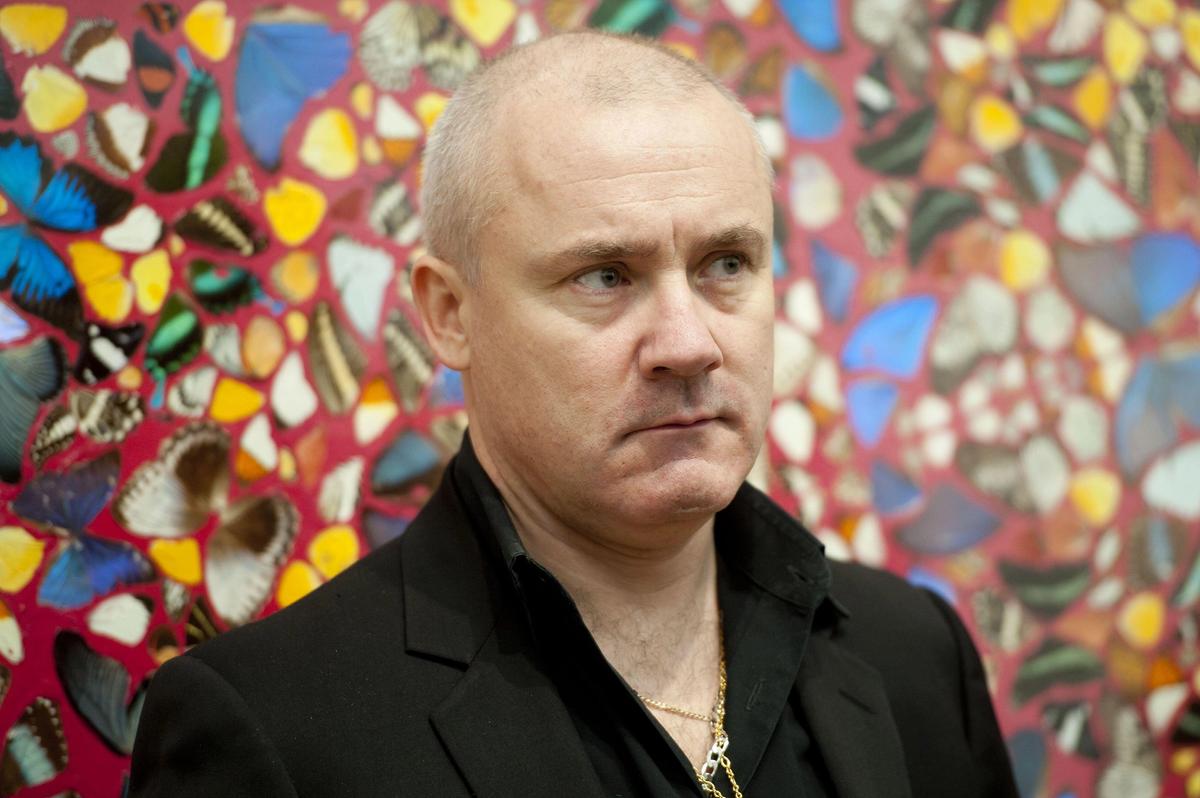The British artist Damien Hirst created and sold more than £8m-worth of art to benefit the NHS in 2020, according to his latest annual report from 2021, which not only reveals the scope of his charitable giving but also how the scale and manner of his business changed over the course of the pandemic.
New financial statements filed with Companies House on 5 January show that Hirst’s company, Science (UK), turned over £10m in 2021—£8.2m less than the £18.2m declared in 2020. According to the new report, “turnover was significantly higher” in 2020 because the company “produced and sold specially designed art work in response to the Covid-19 pandemic and the proceeds from this were donated to the NHS”.
It is not clear whether the “proceeds” equated to 100% of the sales value, though the cost of producing all works in 2020 was reported to be £10.8m (compared with £9m in 2021). The artist declined to comment on how many works he made and sold to benefit the NHS in total in 2020.
Some of Hirst’s NHS projects from that year were well publicised. Among the most high-profile were his Butterfly Heart design, a laminated gicleé print on aluminium composite panel in two sizes, which raised £1.55m towards the Evening Standard’s Food For London Now campaign, organised in conjunction with The Felix Project to provide meals for vulnerable Londoners including NHS staff. According to an article in the Evening Standard dated 29 May 2020, “more than 4,400 people backed our campaign by purchasing the Hirst limited edition prints, with 3,109 buying the small size priced at £300 each and 1,299 the large size priced at £1,000”. Another print—Butterfly Rainbow, which was also produced in two sizes priced at £300 and £1,000—raised £1.5m for NHS Charities Together.
In an Instagram post from 18 May 2020, Hirst said of the two projects: “I wanted to do something to support the brave people who are risking their lives to help those in need during this time of crisis so I’m selling ‘Butterfly Rainbow’ to help fund the brilliant work being done by @nhscharitiestogether staff across the country and ‘Butterfly Heart’ to raise money for @thefelixproject with @evening.standard who are ensuring food is delivered across London to those who need it the most.”
He went on to explain that the prints were available online for exactly one week, adding: “The size of the editions will be decided by how many people want to buy them within that timeframe so hopefully no one will miss out and all profits will go to the charities.”
The artist’s latest report also reveals that Hirst’s gross profit in 2021 was £956,161 compared with £7.5m in 2020, while net profits were £2.3m in 2021 and £1.2m in 2020, the year £40.4m in unspecified administrative expenses were claimed.
Jason Beard, the art director who revamped Hirst’s website and designed many of his books, resigned as a director of Science (UK) in May 2022. Beard was the last of five external directors at the company. Hugh Allan, a friend of Hirst’s since school, left in October 2018, while the other directors—James Cameron Kelly, Jude Tyrrell, and Sylvia Park—left in 2017. Meanwhile, Connor and Cassius Hirst, the artist’s sons, were appointed directors in October 2022 (Connor had been appointed a director of in May 2021, though that appointment was terminated in June 2022).
Beard’s exit follows the departure of 63 people from Hirst’s studios in 2020 who were laid off as Hirst remodelled his business during the pandemic to focus on producing work himself. The accounts state that the average monthly number of employees dropped from 156 in 2020 to 95 in 2021 (in 2019, employees stood at 175). Hirst’s company received £1.3m in furlough payments in 2020.
According to the 2021 financial report, the value of properties and land owned by Hirst in the UK amounted to more than £60m. Meanwhile, his company Science (UK) owes £83.8m to Science Ltd, a parent company registered in Jersey, which purchases Hirst’s art at cost price.


